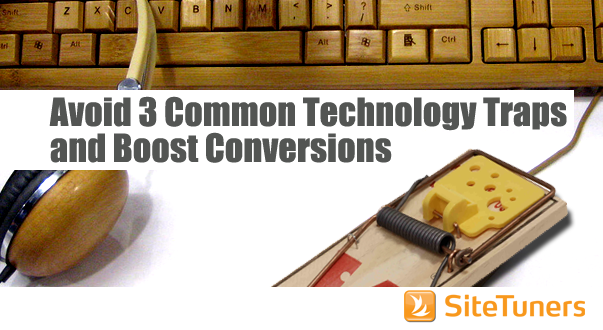
That’s what marketers say after they employ a largely tech-driven tactic that provides some lift. Unfortunately, that’s rarely the end of the story. Often, things that look simple — e.g., implementing pop-ups to capture email addresses for remarketing or enabling promo codes — can have unintended consequences. If you don’t think through the usability impact or downstream conversion effect, technology-driven improvements will often cause tough-to-diagnose pains down the line.
Therefore, it’s better to be prepared. When implementing one of these tactics, it’s better to think through implementation pitfalls before execution, start small, and test your way in. Here are a few areas where you have to be especially careful:
1. The pop-over trap
Look, pop-ups can work. They can work really well. It’s actually because they have so much potential that a lot of marketers overextend how pop-ups are supposed to be used.
The problem starts when marketers use pop-ups to get email addresses very early on, usually through a discount or featured product campaign. This is, of course, a technology play. If you have the email address associated to a visit, you can do a range of interesting things:
- ensure visitors can come back to a cart without starting over, if they get that far; and/or
- remarket to a person if he or she leaves the site without completing a transaction.
Those are both nice to have in the bag — after the visitor does some actual visiting. The problem with how this tactic is being used is that the pop-ups usually launch within two seconds of the visit. That’s before the visitor has had to make sense of the navigation or scan the content to see if what he or she needs is available.
There are two key issues here. The first one is about attention to the task. When someone is considering whether your site has what they need, the last thing you want to do is get in the way and call attention to something else. The second one is segmentation and personalization. Two seconds in, you rarely have enough information to create a compelling offer.
How to spring the trap: Test pop-ups after a few decisions have been made by the visitor, and start small by implementing on page exit or on cart abandonment pop-up plays. Getting that email is key, but not at the expense of losing a visitor.
2. The personalization trap
There’s no shortage of ink spilled on personalization in today’s omnichannel, mobile-enabled world. And of course, there are a few key ones almost everyone agrees on. Nobody’s going to argue that you don’t need responsive web design, a mobile version or both for different devices, or that you don’t need to serve locally relevant content when you serve multiple territories.
However, that’s the baseline. You can take personalization a lot further than this. For example, you can serve different content for people with different roles — assuming you have the data from a form fill — or, with data, move around page and navigation elements based on past behavior. Here’s the rub: while most companies salivate over this functionality, it rarely leads to good outcomes.
Personalization can work for simple tasks that don’t change over time, but almost everything else isn’t mature enough to use right now.
How to spring the trap: Only add personalization features when you have a significant volume of data, and when users don’t need to do any extra work — e.g., Amazon.com’s book recommendations
3. The promo code trap
It’s not just complex stuff like personalization that can get in the way of a conversion; sometimes, it’s the little things like promo codes that get in the way. Usually, promo codes work out great — that is, unless you put them in front of a visitor who, just 10 seconds ago, was ready to buy from you.
What happens when you do that is that the visitor fees like he or she is missing out on a deal, and someone you previously had a conversion lock on will flee, looking for that promo code, likely never to return.
How to spring the trap: If at all possible technology-wise, don’t display the promo code box for everyone. Show the box pre-populated for people who qualify, or remove the box and make the discount code more subtle so you don’t get in the user’s way.
Despite all this, technology is your friend — you just need to know to watch it closely. This is doubly true when you’re working with pop-ups, content management systems with personalization enabled or campaigns with promo codes.
This article originally appeared in Tim’s Retail Online Integration column February 25, 2015


